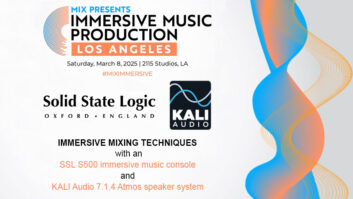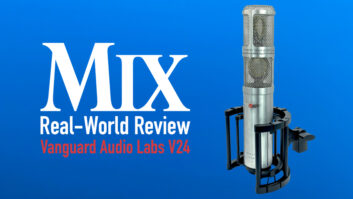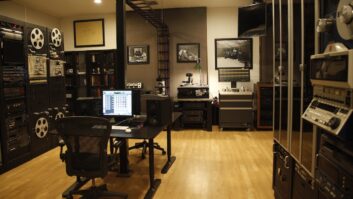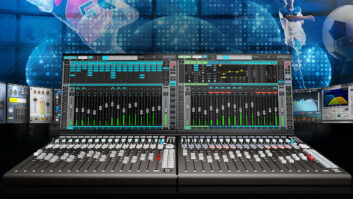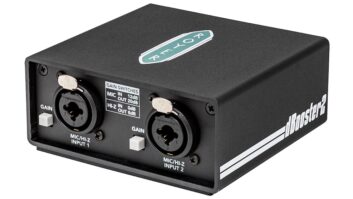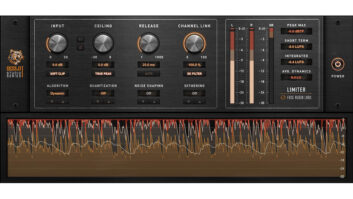With sixteen books that are considered staples in recording, music, and music business programs at colleges around the world, Owsinski is best known for authoring “The Mixing Engineer’s Handbook,” “Music 3.0: A Survival guide For Making Music In the Internet Age,” and the upcoming Ken Scott Memoir “Abbey Road To Ziggy Stardust.” His production skills are highly respected and he most recently finished producing the latest album for LA-based rockers SNEW. With credits like these, it comes as no surprise that Owsinski relies on the industry’s best production tools—including microphones from Mojave Audio and sibling company Royer Labs.
Scheduled for release during summer 2012, Owsinski’s latest audio course focuses on the various standard techniques of miking most common instruments, including horns and strings. Entitled “Audio Recording Techniques,” the course is a continuation on the theme of his first Lynda title, “The Audio Mixing Bootcamp.” On this project, Owsinski used a combination of two Mojave MA-100 condenser microphones, one MA-300 multi-pattern vacuum tube condenser microphone, and two R-121 mono ribbon microphones. He discussed those attributes that made these microphones the right tool for the job.
“These microphones were used in a comparison of how different types of mics and different mic patterns impact the sound on each instrument,” Owsinski explained. “The MA-100 was used as a typical example of a small diaphragm condenser, the MA-300 as an example of a large diaphragm condenser (and sometimes as an omni compared to a cardioid pattern), while the R-121 served as an example of a ribbon mic. The two MA-100’s were also used to demonstrate examples of various stereo miking configurations.”
Every producer/engineer has his or her favorite mics for specific applications and Owsinski is no exception. “The Mojave MA-100’s sound incredibly good on acoustic piano,” he reports, “and they also proved to be excellent on acoustic guitar and strings. Similarly, you just can’t beat the Royer R-121’s for drum overheads or on brass due to their smooth and natural response.”
As the saying, “You get what you pay for,” goes, neither studio time nor professional grade studio electronics are inexpensive. That’s why it’s critically important for studio professionals to invest in equipment from companies who recognize the value of customer support. In this regard, Owsinski considers both Mojave Audio and Royer labs to be best-in-class, “I’ve known John Jennings and Dusty Wakeman from the very beginning of both Royer Labs and Mojave Audio as companies. Not only are they extremely knowledgeable about their products and their uses, they also go out of their way to service dealers and end-users alike. They really care about their products and make every effort to ensure the user experience is superlative. They’re musicians first, and that comes through in the way they’re concerned about their customers’ projects.”
Before shifting his attention back to the business of the day, Owsinski offered these final thoughts, “In my opinion, Royer and Mojave microphones are the best value in the industry. The quality of audio they capture is as good as it gets, and yet you pay about half or a third of what you’d normally expect for that level of quality. I know that whatever I work on, if I have some Mojave and Royer mics around, that’s one less area I have to worry about. They’ll always sound great. The best endorsement for these microphones occurs when you place them on an instrument and the musicians rave about the sound they hear on playback. That’s when you know it’s special.”
To learn more about Bobby Owsinski, visit him online at www.bobbyowsinski.com.
About Mojave Audio
Located in Burbank, California, Mojave Audio is a manufacturer of quality microphones for the recording professional. Additional information on the MA-300, MA-100, and all Mojave Audio products, visit the company online at www.mojaveaudio.com.
About Royer Labs
Located in Burbank, California, Royer Labs’ microphones are a staple of leading recording and broadcast facilities. For additional information about the R-121 and all Royer microphones, please visit the company at www.royerlabs.com.
###
